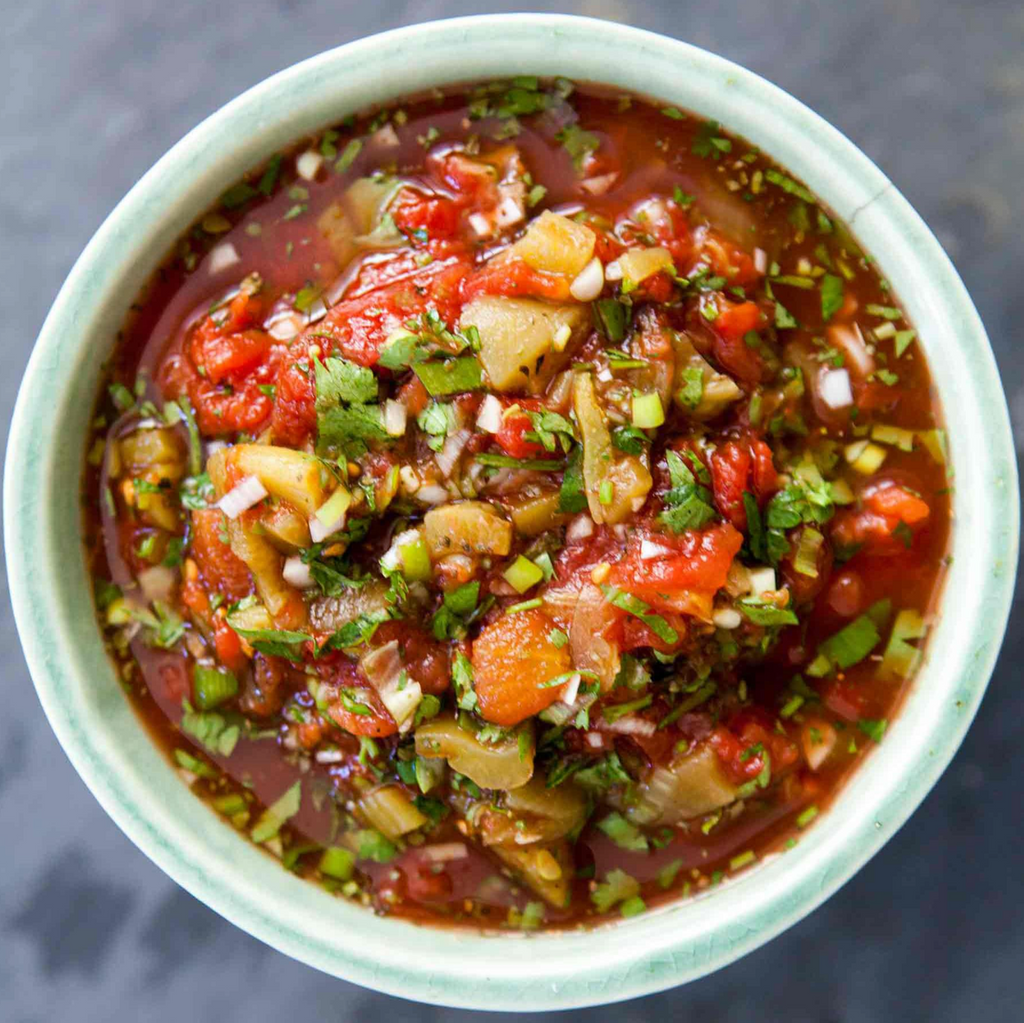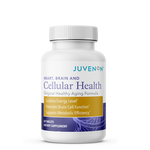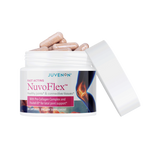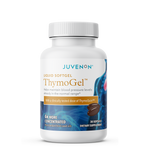
This is my all time favorite salsa recipe. Chipotle comes from the Nahuatl/Aztec word chilpoctli, which means smoked chili. The chipotle peppers in Adobo sauce add a nice depth of flavor. Using a blender reduces some of the chopping and makes this salsa fast and easy to prepare. You can vary the ingredients according to your own taste. I love this salsa with tortilla chips but find myself sneaking it on eggs, potatoes, rice, pasta, or in salads for extra flavor.
Ingredients
1-2 Jalapeno peppers, seeded
1 clove garlic, finely chopped
1 bunch cilantro, stems removed (approx. 3 cups loosely packed)
1/2 red onion, coarsely chopped
1-2 Chipotle peppers in Adobo sauce (NOT entire can!)
1, 7 oz can green chilies
4-5 tomatoes
2, 14.5 oz cans Mexican stewed tomatoes
Juice from 1/2 lime
1/2 avocado, finely chopped
Directions
Add all of the ingredients (except the avocado), in the order listed, to your blender.
Pulse to desired consistency. Don’t over blend.
Mix in the chopped avocado at the end (don’t blend).
Salt to taste.
You can eat the salsa right away but the flavors tend to blend nicely if you let it sit in the refrigerator for a couple of hours. I can never wait that long!
Key Ingredient Benefits
Avocado: This fruit is loaded with nutrients including vitamins E, K, C and B. The fat content of avocados is significant, however it is the healthy type, oleic acid. Oleic acid improves fat metabolism and is the same monounsaturated fatty acid present in olive oil. Dubbed the alligator pear, avocados help to support the cardiovascular system and regulate blood sugar.
Chipotle Peppers: A chipotle is a jalapeno that has been smoked or dried, typically using a wood smoker. The smoking quells the heat of jalapeno peppers, giving them a milder, more complex flavor. Like all peppers, the chipotle variety has capsaicin, a chemical compound that may dilate your blood vessels, improving circulation and reducing your risk of heart disease and stroke. There is clinical evidence that capsaicin can be used to treat nerve-related disorders like persistent pain, psoriasis, and neuropathy. Peppers are also a great source of vitamins C and A.
Cilantro: The leaves are variously referred to as coriander leaves, fresh coriander, Chinese parsley, or cilantro (in America, from the Spanish name for the plant). In parts of Europe, this herb has traditionally been referred to as an “anti-diabetic” plant because it may help to control blood sugar. In parts of India, it has traditionally been used for its anti-inflammatory properties. In the United States, cilantro (coriander) has recently been studied for its cholesterol-lowering effects.
Garlic: Vampire jokes aside, garlic can protect us in many ways. It contains sulfur compounds that may protect cells from cancer, relax blood vessels and improve cardiovascular health. Research suggests garlic may help boost our cellular antioxidant production. There is some evidence supporting numerous health benefits from a diet rich in garlic.
Green Chilies: This ingredient is a staple of Indian and South American diets. The chili is the fruit of the flowering plants Capsicum annuum and C. frutescens. The most abundant nutrient in green chili is vitamin A, which is essential for the health and maintenance of bones, teeth, mucous membranes, eyes and skin. And like other peppers, green chilies are a good source of vitamin C, as well as featuring the capsacin, which offers powerful health benefits.
Jalapeno Peppers: Jalapenos are just one variety of chili pepper. These little peppers derive their heat from a natural plant compound called capsaicin, which offers powerful health benefits. (The hotter the chili, the more capsaicin it contains.) Capsaicin may dilate your blood vessels, improving circulation and reducing your risk of heart disease and stroke. There is clinical evidence that capsaicin can be used to treat nerve-related disorders like persistent pain, psoriasis, and neuropathy. Peppers are also a great source of vitamins C and A.
Lime: This citrus fruit contains citrus bioflavonoids, which have antioxidant properties and are active in improving the function of the immune system. It also has anti-microbial properties and is a good source of a number of nutrients including, vitamin C, potassium, and folate. Bioflavonoids may also function as anti- inflammatories and lower blood pressure and cholesterol.
Onions: Onions contain a number of flavonoids, one being quercetin (found in Juvenon’s Youthful Energy). This nutrient has been demonstrated in studies to protect the liver, cool the fire of inflammation and has anti-cancer properties. Quercetin may help in weight control by reducing fat synthesis and increasing fat burning.
Tomatoes: Tomatoes are a good source of the flavonoid antioxidant, lycopene. Studies have shown that lycopene may offer protection from skin damage and skin cancer. Another flavonoid abundant in tomatoes is Zeaxanthin, which helps prevent age related macular disease (ARMD). This fruit, which is often thought of as a vegetable, is also a good source of vitamin A, vitamin C, and potassium.
Michelle Nowicki has a Bachelor of Science in Food and Nutrition, completed a dietetic internship at Yale-New Haven Hospital, and has a graduate degree from Yale University.



















